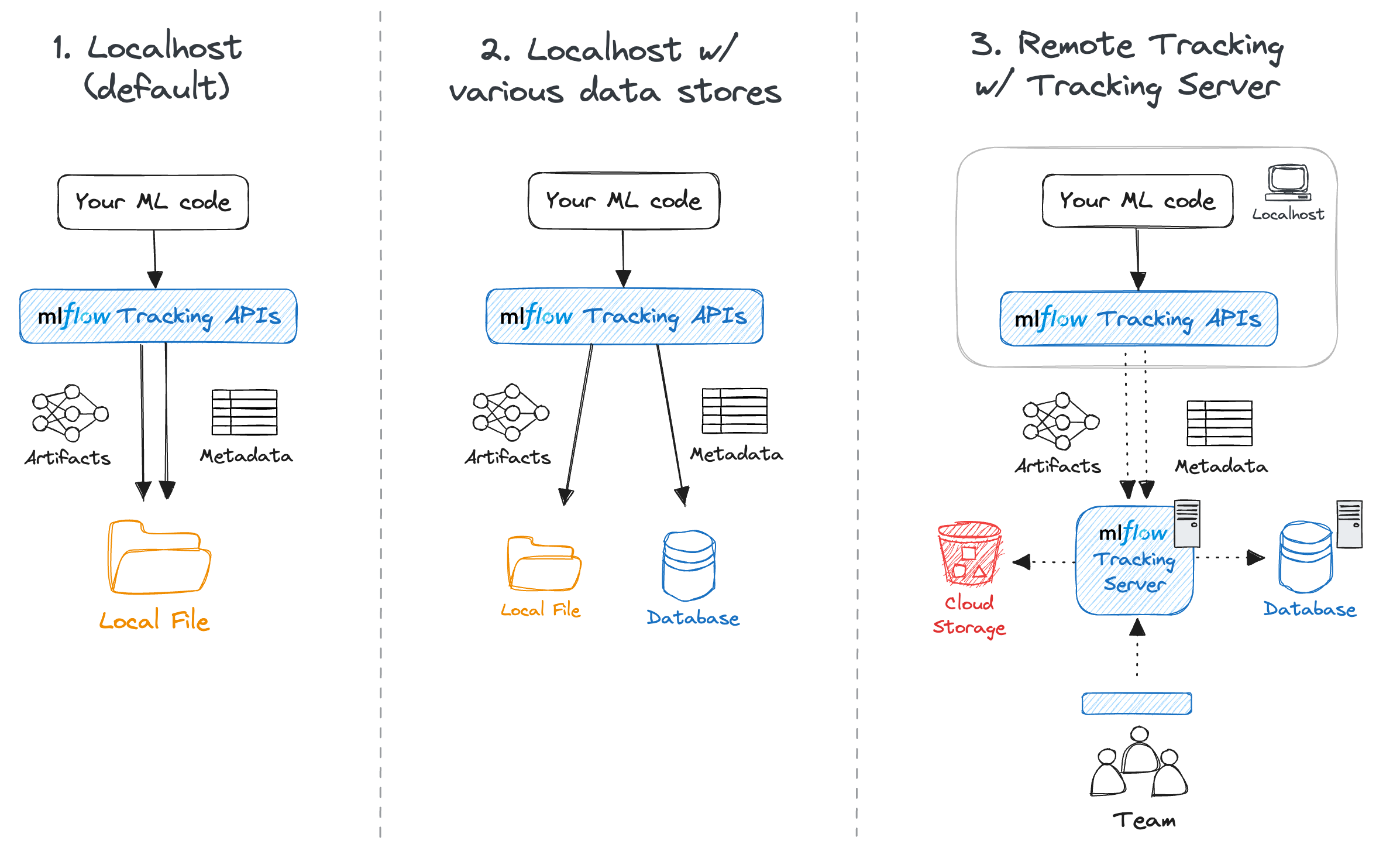MLFlow for Machine Learning Teams
As machine learning teams scale their scope of influence in an organization, they often run into a tension between tailoring models for precise outcomes and maintaining streamlined workflows. MLflow can be a really useful tool in addressing this tension, offering an open-source platform that simplifies experiment tracking, model tuning, versioning, and deployment. Its capabilities enable data scientists to refine their models with detailed adjustments while supporting a workflow that’s automated, scalable, and integrates with many systems. This post offers a deep dive into MLflow and some of its benefits to a Machine Learning team attempting to operationalize and scale.
Starting learning MLFlow: Getting started in ML Flow: Local server and Experiment Tracking
Model Registries: Centralizing Your ML Assets
A fundamental step for teams embarking on machine learning operations (MLOps) is establishing a model registry—a centralized hub for managing and deploying machine learning models. MLflow’s model registry acts as a comprehensive library, not only for storing high-performance base models but also for cataloging their various iterations, each optimized for different applications or data features.
Benefits of model registries:
Efficiency in Development: By selecting and adapting models from this library, teams can drastically reduce the time and resources required to develop new solutions.
Quality Assurance: Access to proven, vetted models ensures a high starting quality, enabling teams to focus on innovation rather than starting from scratch.
Facilitating Innovation: A well-organized registry encourages the exploration and customization of models for new applications, promoting a culture of continuous improvement and innovation.
MLflow simplifies the creation and management of these model versions, supporting:
Selection of Base Models: Easily choose a suitable model as the starting point for new projects.
Tuning and Customization: Fine-tune models with specific data to enhance performance for unique tasks.
Version Tracking: Effortlessly manage and iterate on model versions, ensuring that improvements are cataloged and accessible for future projects.
MLFlow’s Model Registry Dashboard View
Experiment Tracking: Learning from Every Attempt
The best way to learn is by trial and error. But are you keeping track of your learnings? Experiment tracking is integral to the ML lifecycle, guiding the model from development to deployment. MLflow supports iterative improvement, allowing for continuous model refinement based on new data and insights.
Here are the core features of MLflow's experiment tracking
Comprehensive Logging: MLflow records every detail of experiments, including parameters, metrics, and contextual information. This complete historical record supports thorough analysis and informed decision-making.
Metric Comparison: MLflow enables direct comparison of experiments through its UI, helping identify the most effective models. Visualization tools offer insights into performance trends, aiding in the optimization process.
Artifact Management: MLflow stores all files related to experiments, such as datasets, model files, and images. This centralized artifact repository ensures every component of an experiment is accessible and linked.
Collaboration: MLflow's tracking fosters collaboration by sharing experiments across teams, enhancing learning, and accelerating innovation. Detailed logging ensures experiments are reproducible, maintaining transparency and facilitating onboarding.
Three different MLFlow tracking configuration options
Seamless Model Deployment and Integration
Deploying a model is only part of the equation; ensuring it integrates seamlessly with the existing tech stack is also crucial. MLflow’s architecture promotes compatibility with various technologies, enabling straightforward integration with tools like Apache Airflow for workflow orchestration and platforms like Amazon EC2 for model inference. Here are the core features of how MLflow facilitates deployments
Version Control and Model Registry: Maintain integrity and ease of access to different model versions, simplifying updates and rollbacks.
MLflow Projects for Packaging: Containerize data science code, making models portable and ready for execution on diverse platforms.
Standardized Model Formats: MLflow Models ensure that deployment is consistent across different environments, supported by automated workflows for a smooth transition from training to inference.
MLFlow model deployment options
Conclusion: MLflow as a Catalyst for ML Success
MLflow offers machine learning teams a robust framework for managing the entire lifecycle of their projects. From simplifying the creation and use of a versatile model library to streamlining experiment tracking and ensuring seamless deployment, MLflow addresses the core needs of teams looking to scale their machine learning initiatives efficiently. By leveraging MLflow, teams can focus on pushing the boundaries of what's possible with their data, equipped with the tools to innovate, iterate, and deploy with confidence.




